Let's take another look at the advertising industry
Let's explore what changed and why it's changed
More importantly let's try and understand why 99% of advertising and marketing course currently taught in universities around the world are now obsolete
Let's begin with what everybody knows to be true
This is advertising 101
This is what the past looks like. The old school ad agency model
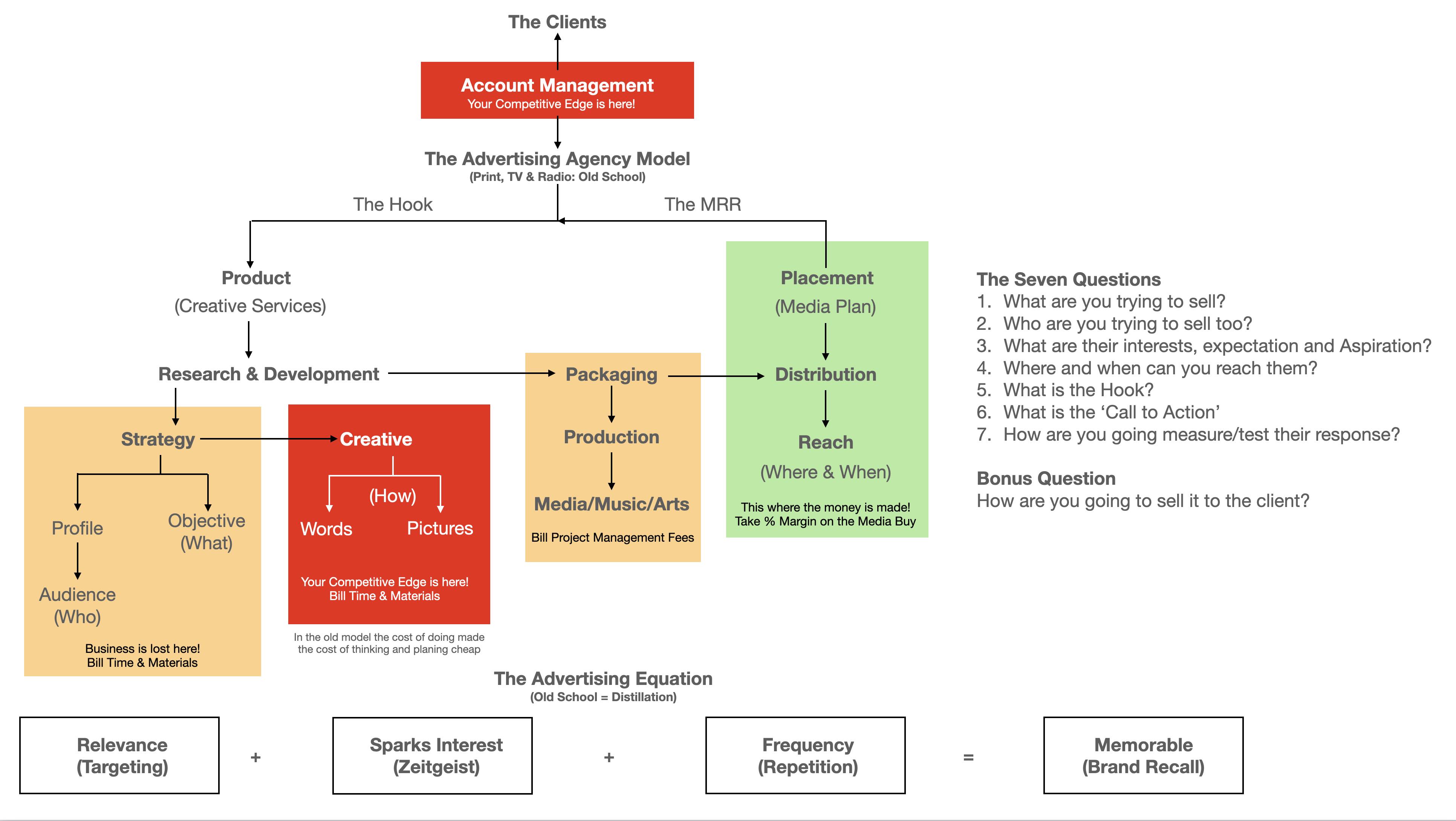
It belongs to a era when time and media was linear
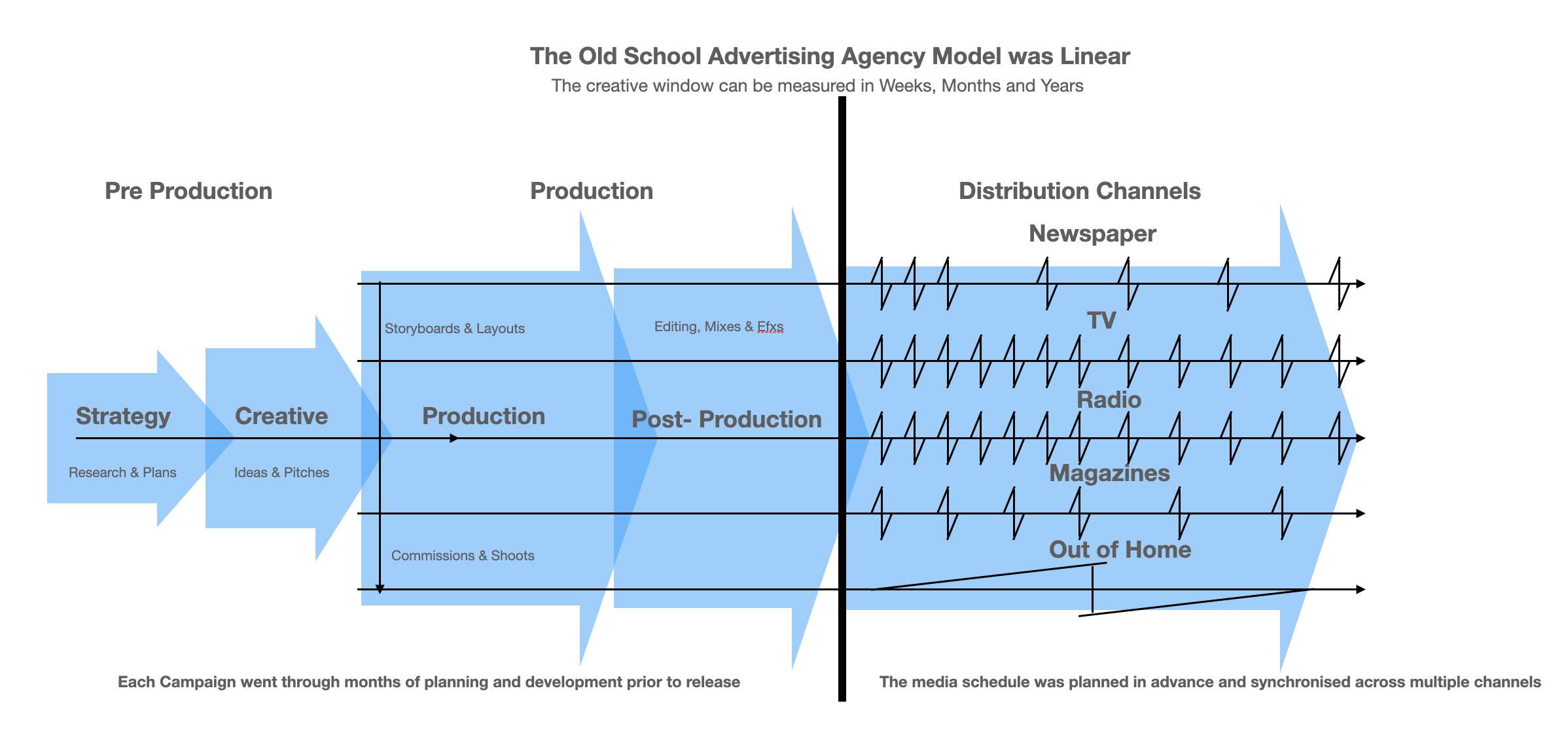
The key insight here? Thinking was cheap. Doing was expensive
So unsurprisingly in the old model people are paid very well to think creatively about the very risky business of telling people stories - old and new
The advent of the computer brought change
Digital media is non-linear. It is a fundamentally different concept of time
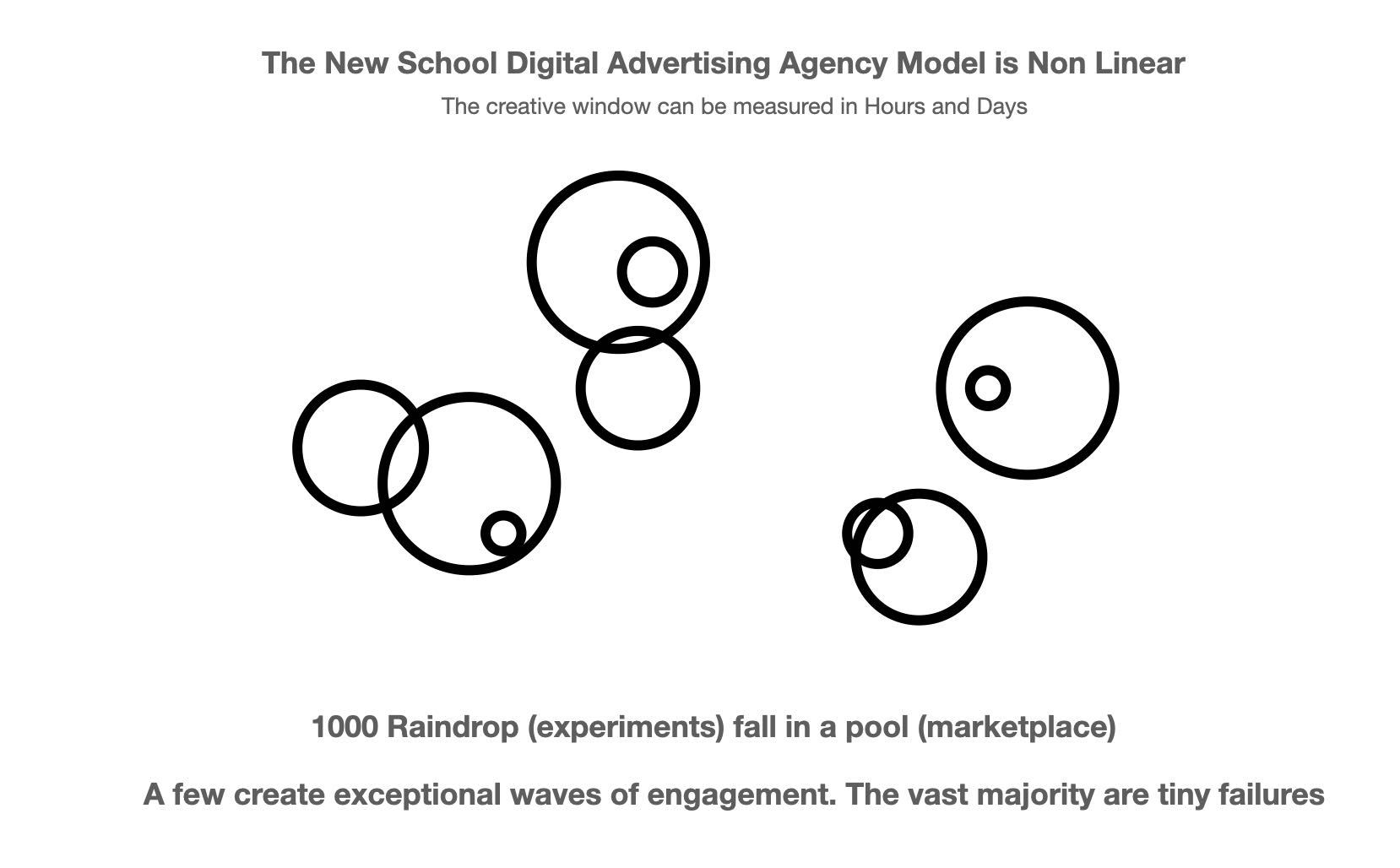
So logically it requires an new way of thinking
Why? Because in this new digital media paradigm time spent thinking is expensive. But doing is cheap
But more on that later.
For the moment understand this... the new model is predicated on in investing heavily in FAILURE (ie failing fast and often) while the old model was predicated on investing heavily in long term SUCCESS (Think: Lifetime Brand Awareness)
The old school of thinking was "Fail to Plan... Plan to Fail"
The evolution of this risk averse creative mindset has fueled much of the slide into banality which has plagued 21st Century advertising
and explains why the value chain that evolved to meet that expection (ie limit the investment in expensive failures) looked like it did
However, thanks to digital media, the new one looks like this
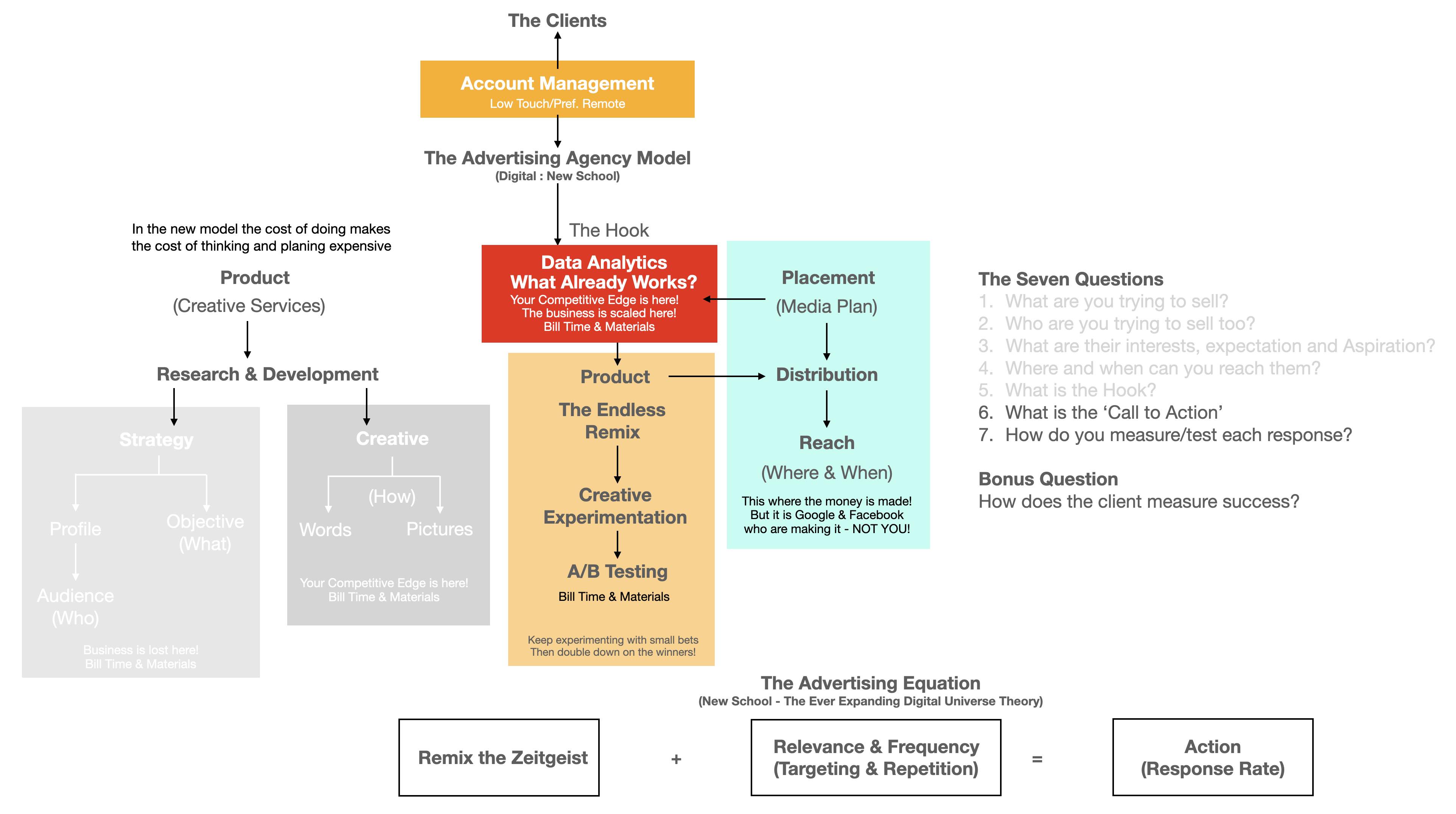
and as you can see whole blocks of the old value chain have become redundant within the model
They have been rendered obsolete or 'too expensive' by Google and Facebook
So much so the model can be reduced down to to this...
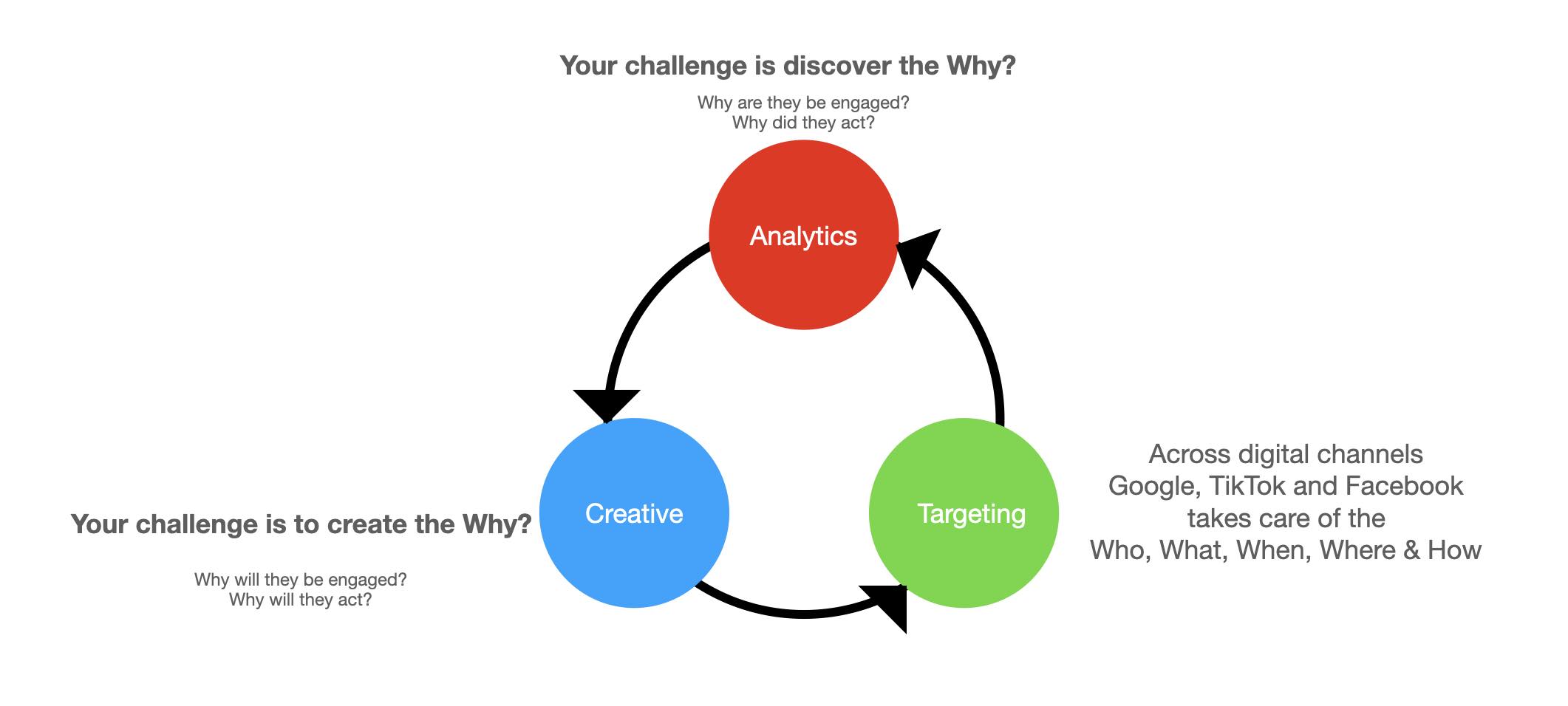
Basically the 7 Questions have been reduced to a singularity: WHY?
Why now? Why me? Why you? or, put simply Why will they...?
Take Google and Facebook out of the equation and we discover the agency model now looks like this
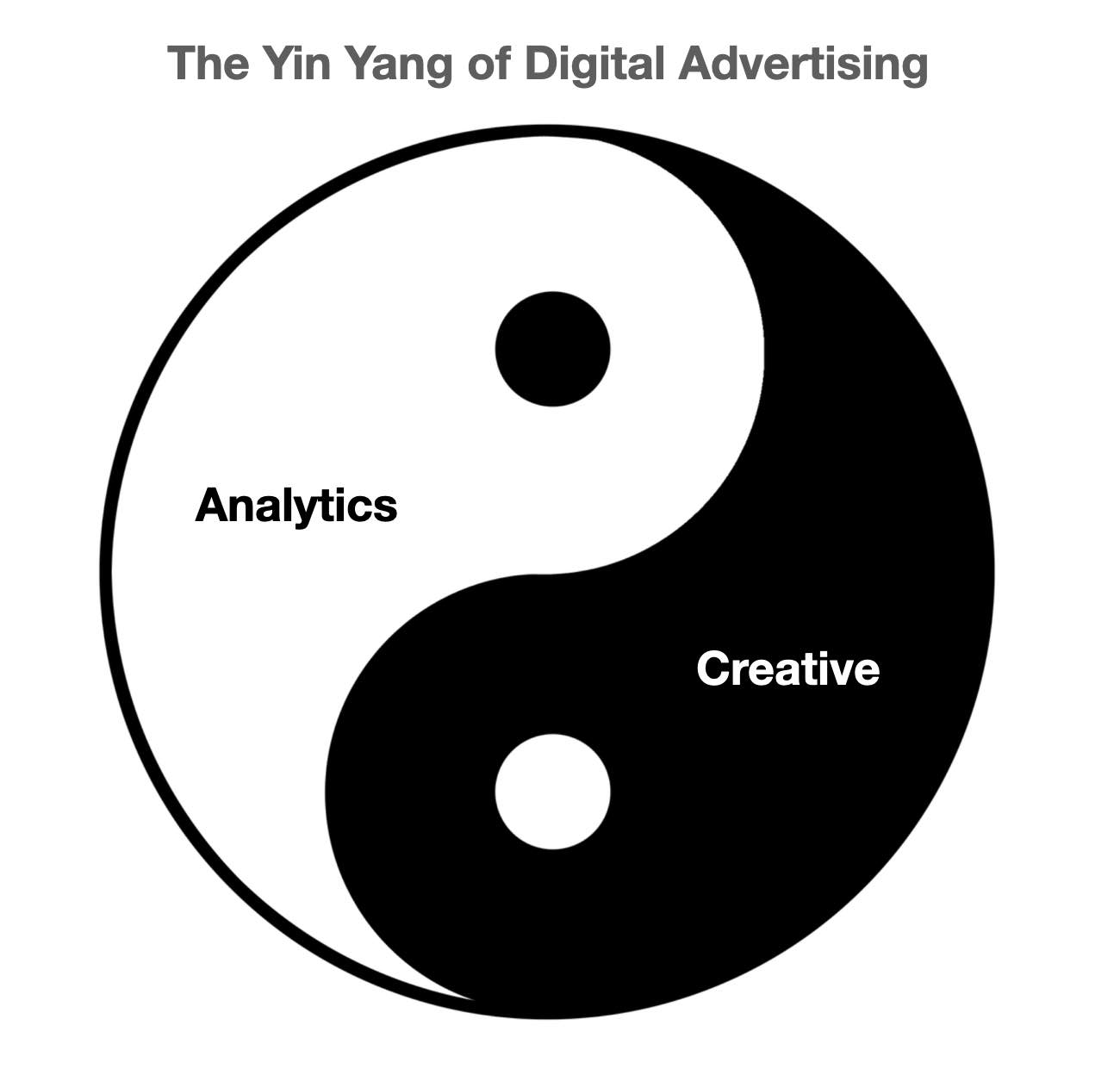
Put them back in and we discover just how much the game has changed
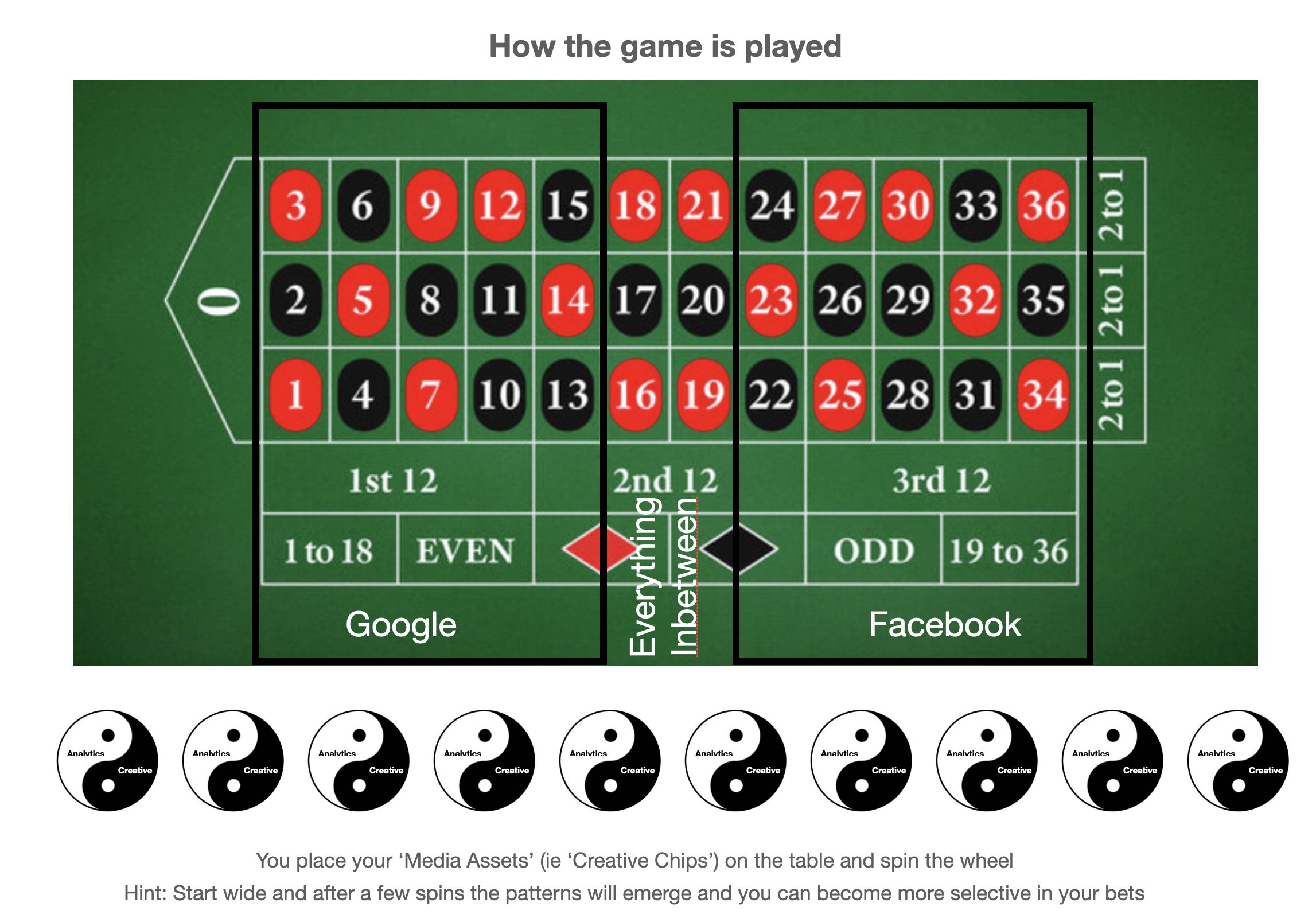
Today advertising is all about the gamification of time and meaning
So much so that the business can no longer be thought of as advertising
It is better understood as the emergence of the Xeme Factory
The Xeme Factory model operates in two phases
Phase one is the ignition phase
It is basically the research that is done before you begin the campaign
The old model invested heavily on strategic planning
The new model interprets the web is a web of mirrors
ie everybody can see a everybody simultaneously
Or, in simple terms, the answer to the problem is already out there... all you have to do is find it and repurpose it to meet the challenge
This approach (ie Search = Strategy) means what took weeks and months in the old model takes minutes and hours in the new model
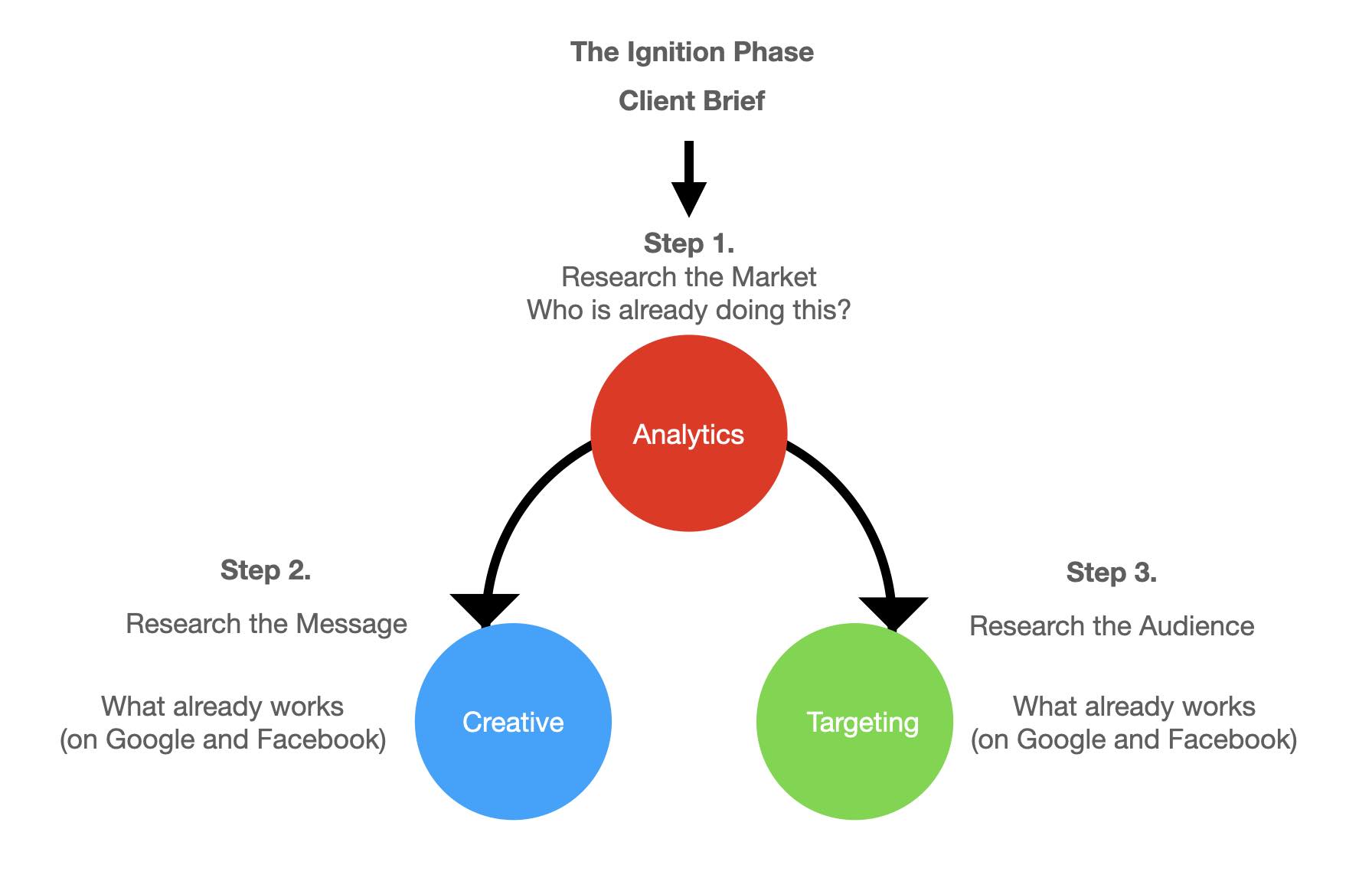
Having fast track the answer to the question of what works and why? We begin Phase 2
In the Emergent Phase the focus is on iterating through parallel experiments in remixing and redistributing competing messages
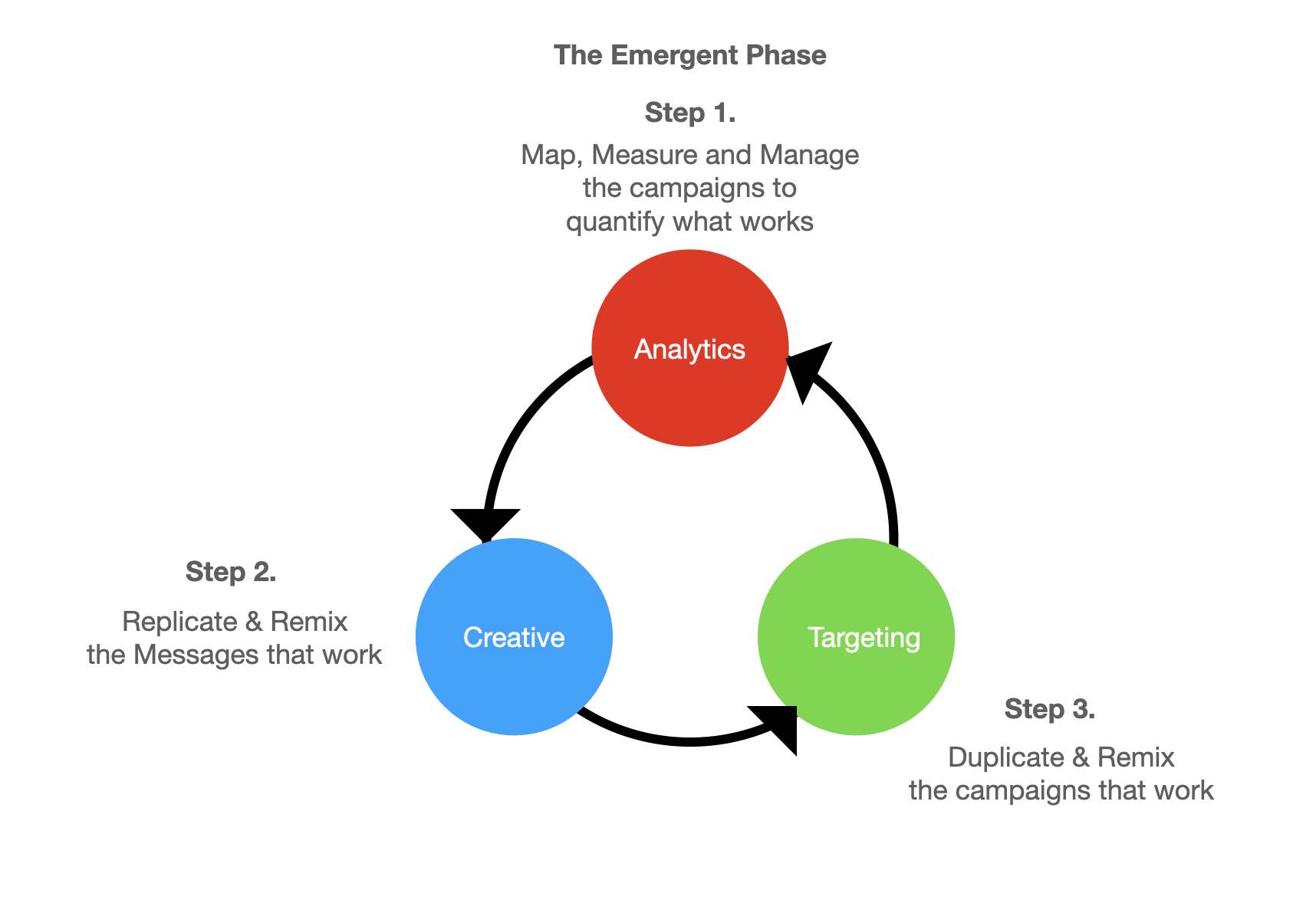
Think of it as the 'survival of the fittest' message
If a message survives and thrives more money and resouces are invested in extending its reach, lifespan and ultimately offspring
On the other hand it it fails it dies a quick death (Think: Hours, maybe days)
It is important to understand that these messages are not ads in the traditional sense
They are better understood as Memes (Memeories exchanged across the network) or, more accurately, XeMes (Units of Experience that exchanged across the network)
The role of the advertising creative is to manufacture XeMes on demand
The role of the Data Scientist is to map, monitor, measure and manage the perfomance of those XeMe as they travel across the network
The role of account manager is to keep the client happy (somethings never change :)
Fast forward 5-10 years and I suspect the new generation agency will reflect the workings of the old
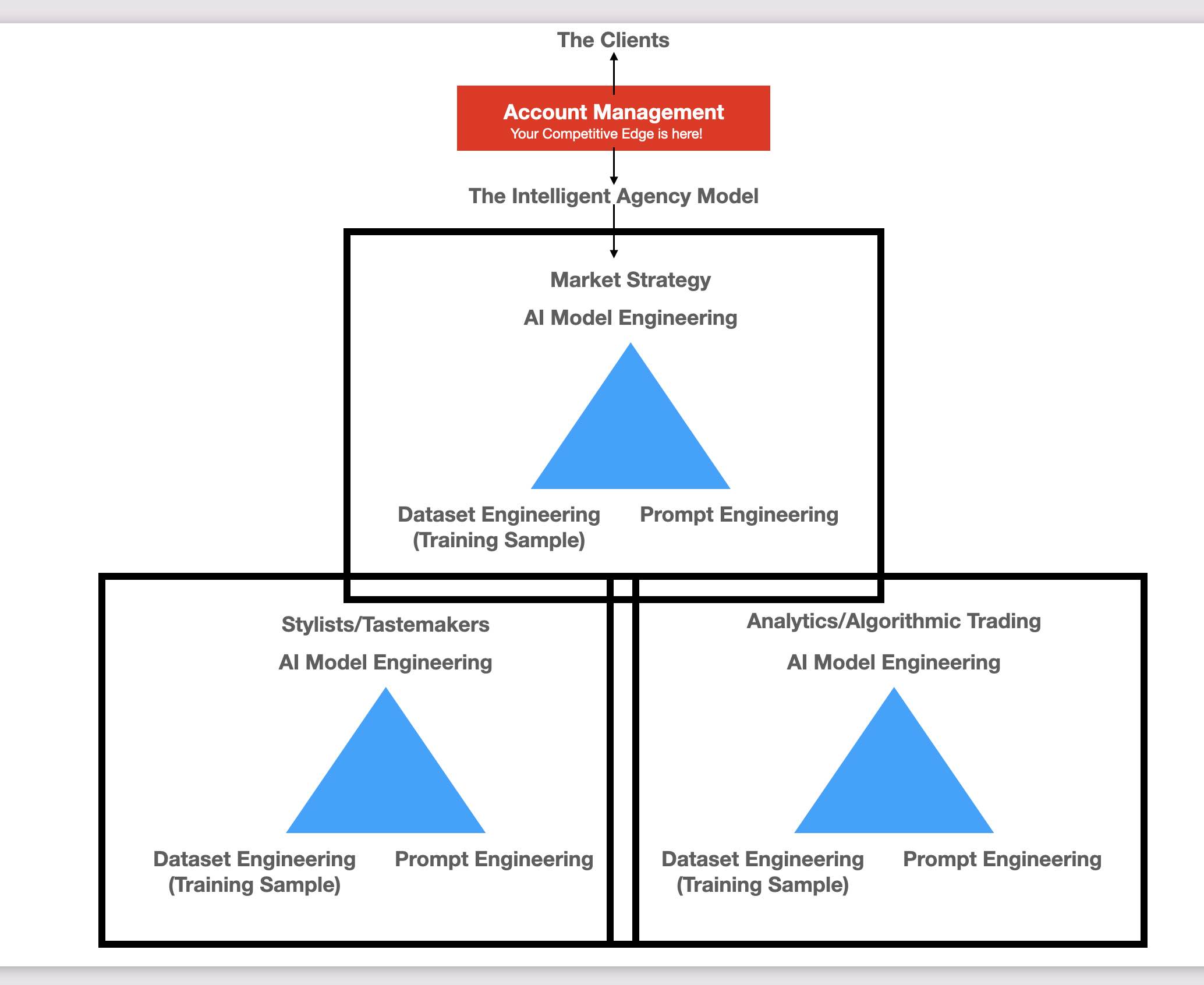
Strategists, Creative Stylists and Media Buyers will manage teams of remote AI specialists who engineer models, datasets and prompts
The future becomes more programatic - or should that be problematic?
The winners are the ones who merge these three engines into a unified model
It will begin with the automatic feeding of responses from Strategy into Creative into Media Placement
It will evolve very quickly into a single prompt from the account manager whose results will be overseen by the strategy, stylist and media leads
Ultimately it'll become a self service prompt managed by the client rolled out concurrently by Google, Facebook, TikTok and who ever else emerges in the interim
Basically the future of advertising will be the request: The warehouse is full. I have swimwear to sell. My campaign budget is $50,000. Come up with a campaign to sell it!
and, the first question the machine will ask is: What's your appetite for creative risk on this?
The answer being: who cares so long as it moves the stuff!
So yes, the future looks like yesterday
But the job descriptions will look very different
and the time from campaign brief to seeing the results of the strategy being executed will be minutes and hours. Not days, weeks and months.
and I don't think this paints a bleak picture
On the contrary I think this changes everything... if we choose to embrace it
The promise of AI across all professional service sectors is that it will solve the age old paradigm of the Triple Constraint: you can have it cheap, fast, or good, but you can't have all 3
For the first time the delivery of ad-hoc, non linear Thinking and Doing will become good, fast and cheap
If it does deliver all three it will be a game changer. The goalposts will have moved and the new triple constraint will become Brilliant, Now and at Zero Cost
But that doesn't solve the real challenge... how well can you manage the risk?
Because advertising has never been a question of how do you price creative... It is how do you price the risk?
The risk of being unseen. The risk of being unspoken. The risk of being unknown. The risk of hiding in plain sight. The risk of being instantly forgettable. The risk of being forgotten
and that insight leads me to the risk this new technology represents to the players in across the media sector
Change is not new. Change is a constant in this game
It's what keeps it alive
It's why people want to work in it
The label AI: Artificial Intelligence is a misnomer
What we are seeing today is the transition from the Augmented Imagination to the Artificial Imagination
Much like the rest of the mobile digital economy we live into today the birth of the Augmented (Digital) Imagination gestated in post war America
e.g in the 1950’s we had RCA and the first digital synth
Mid-1960’s delivered The Moog Synthesiser
By the1970’s we had the Quantel Video Paint box
All expensive pieces of kit costing $millions
By 1980 the cost of these tools hard dropped to $10,000’s
1979 delivered the Fairlight CMI
By the mid - 1980’s we had the Fairlight CVI, Silicon Graphics workstations, Alias and Wavefront Software Technologies
By the end of the decade the cost of these tools (inc hardware) had dropped to $1000’s
Mainstream with the release of the Mac II and Photoshop in 1987, Cubase and the Avid NLE in 1989
Robert Abel and Associates, ILM and Pixar being the key studios that drove innovation in this space throughout the 80’s
The release of MTV 1981 and Tron 1982 being the creative triggers that fuelled a generation of creatives seeing to change the world
I worked in advertising in the heart of it. You could feel the world changing. The excitement generated by each new visual efx generated by these rooms full of very expensive audio visual tech
Three decades on and the cost and portability of these tools is now effectively free and mobile e.g. Hipstamatic, Instagram, TikTok & Snap filters
The key technology battle in this post war period was the transition between the incumbent (Film) and the disrupter (Video)
In the beginning video wasn’t better. It was just faster and cheaper. It was only later, with the rise of the digital tools in the 1980’s that video - or more accurately digital media - delivered on the triple constraint of being faster, cheaper and better quality than film
But just like having lots of sunshine wouldn’t make you the next Hollywood, or owning a typewriter making you a great novelist, or owning a paint brush doesn’t make you Picasso, having a video camera in the 1980’s didn’t guarantee you’d become a great filmmaker
Arguably having these new digital media tools only amplified the skills gap for most creative aspirants
That was the 1980’s. What about today? What about the 2020’s?
What we are seeing today with the release of software tools and services like MidJourney, Stabliity.ai, runwayml, scribblediffusion, senario.gg, leonardo.ai, ChatGPT, cop.ai, Uizard, Rebuild, Soundful & Controlnet represents the birth of the Artificial (Digital) Imagination as we transition from digital media being a creative tool to something better understood as a creative partner
The most obvious change being the UI/UX of these creative tools (eg Text to Image or Music)
Today these technologies are faster and cheaper than their creative incumbents (Think: Humans)
Arguably it’s only a question of when, not if, these technologies deliver on the triple constraint
and the question (looking back) for any creative who missed out will be
“What will happen now?… because we didn’t do that back then when we had the chance…”
Because - as I said above - is not a question of how do you price the creative... It is how do you price the risk?
The risk of being forgotten. The risk of becoming obsolete. The risk of not partnering with the myriad of emerging Artifical Imaginations that will test you and bring out the best you have to offer... tomorrow